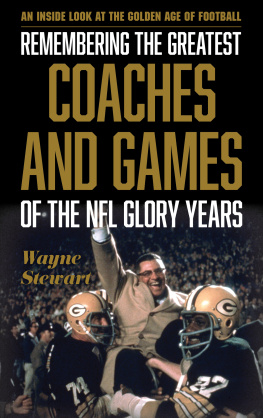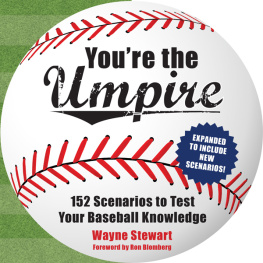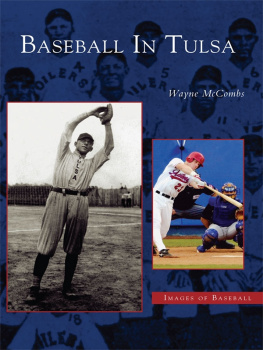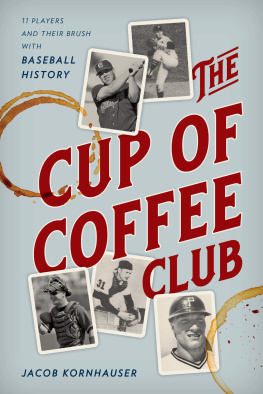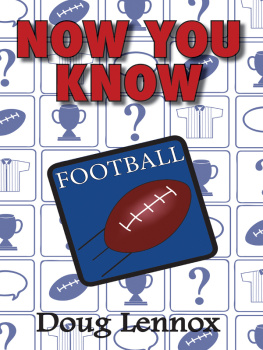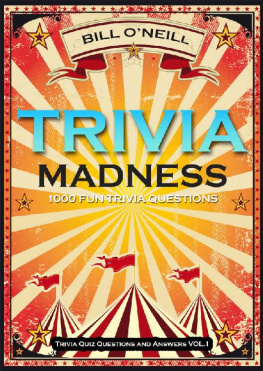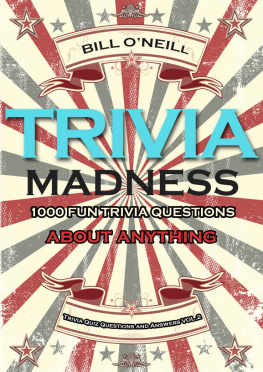

Copyright 2022 by Wayne Stewart
All rights reserved. No part of this book may be reproduced in any manner without the express written consent of the publisher, except in the case of brief excerpts in critical reviews or articles. All inquiries should be addressed to Sports Publishing, 307 West 36th Street, 11th Floor, New York, NY 10018.
Sports Publishing books may be purchased in bulk at special discounts for sales promotion, corporate gifts, fund-raising, or educational purposes. Special editions can also be created to specifications. For details, contact the Special Sales Department, Sports Publishing, 307 West 36th Street, 11th Floor, New York, NY 10018 or .
Sports Publishing is a registered trademark of Skyhorse Publishing, Inc., a Delaware corporation.
Visit our website at www.sportspubbooks.com.
10 9 8 7 6 5 4 3 2 1
Library of Congress Cataloging-in-Publication Data is available on file.
Cover design by David Ter-Avanesyan
Cover images by Getty Images
ISBN: 978-1-68358-434-6
Ebook ISBN: 978-1-68358-441-4
Printed in the United States of America
DEDICATION
To my family: wife Nancy, sons Sean and Scott, daughters-in-law Rachel and Katie, and my grandson Nathan.
Also to my cousin Dale Stewart, a rugged fullback out of Carnegie Tech who is as comfortable with his artists palette as he was with the pigskin.
And to four of my former colleagues in eduction, Karen Calloway, Susan Smith, Cathy Burchell, and Bonnie Glasbrenner.
ACKNOWLEDGMENTS
Thanks to my grandson, Nathan Stewart, for providing me with some material for this bookhe deserves some co-writing acknowledgment!
CONTENTS
INTRODUCTION: GROUND RULES
J ust as managers and umpires go over the ground rules prior to games, you need to understand how to use this book. Each chapter has questions of four levels of difficulty sprinkled throughout. Each question has an indication of what correct answers earn for you in terms of baseball, from a single for the easiest items to a home run for the toughest of questions.
Someone once said that in theory, a baseball game, played, of course, with no clock, could last infinitely. In fact, if hitters could manage an unending stream of hits, one inning could last indefinitely. Likewise, in this book, as long as you answer questions correctly, youll rack up tons of hits and runs. Keep track as you progress through the book. After three outsthat is to say three incorrect answersyou end an inning and clear the bases of any runners youve earned before moving on to your next three outs. Compete against yourself or others and see just how many runs you can compile before making your 27th out.
All of the records and statistics used in this book are from the time period of 1900 through the 2020 season. In addition, when sources varied concerning records or stats, this book went with baseball-reference.com as the definitive source.
Admittedly, the determination of what each question is worth is subjective, but weve tried to be fair in judging each questions difficulty. Also, you may notice there are fewer questions worth triples than other hits, but three-base hits are, in real life, quite rare. Overall, though, there was no deliberate attempt to have the ratio of the questions worth singles, doubles, triples, and homers reflect real baseball. After all, too many questions worth singles would make this book too easy, and having a ton of highly challenging questions with a home-run value to reflect the glut of players swinging for homers in the game in recent years, may have made the book ridiculously difficult for some readers.
Very few of the home-run questions were designed to baffle serious trivia buffs by asking about extremely obscure players, incidents, statistics, and records. However, if you come across a few that seem way too difficult, just imagine youre facing an overpowering pitcher and that youve decided to either swing from your heels and take a hack at such questions, or figuratively take three strikes and head back to the dugout. Look at it this way, even if you miss a few very tough ones, youll probably learn something new and improve your game. In any event, just have fun.
One goal of the book was to supply the reader with a wide variety of questions. If you come across, say, several questions in a row dealing with a certain theme or topic, and you dont particularly care for that group of items, move onthere are many different types of questions to challenge and appeal to you. Again, read this book to entertain, to learn new facts, to be challenged, and to simply experience enjoyment.
All petty points and lead-in material aside, its time to move onits your turn at the plate.
CHAPTER ONE
POSITION PLAYERS
. Single: Which player dominated MVP voting for years, starting with his first full season when he came in second in the balloting? Through 2020, over his first nine full seasons, he won the trophy three times, finished second in the voting four times, came in fourth once, and wound up fifth in the balloting once as well. Therefore, he had been in the top five every season from 2012 through 2020, truly a remarkable streak.
. Home Run: Many experts have argued about which trades are the worst in baseball history. One has to be the time (December of 1971) when the New York Mets gave up on a young Nolan Ryan, a pitcher who, after leaving the Mets, would go on to set a slew of records over his illustrious Hall of Fame career. Which infielder was traded by the California Angels to New York for the Ryan Express? It should also be noted that the Mets even threw in three other players in the deal!
. Single: The 2020 season, almost decimated by COVID-19, limped its way to a conclusion with teams playing far fewer than the normal 162-game schedule. Nevertheless, some players still turned in shining performances. Which Dodger led the National League in WAR? Clue: he was the American League MVP in 2018 and gave a good run at winning that award in the National League in 2020, finishing second (albeit a rather distant second).
. Double: When French Bordagaray was with Brooklyn, he once was tagged out at the plate when he tried to score standing up. Asked why he hadnt slid, he stated that sliding might have meant he would have broken his cigars in his pocket. Now, which player who led his league in steals from 19811984 once shied away from sliding on his hips, choosing to go into bases headfirst because his hip pocket was where he stashed a vial of cocaine?
. Double: One of the great early era stars amassed 914 stolen bases (no. 3 lifetime) from 1888 through 1901. In 2013, a rookie who had the same name as the speedster from long ago burst onto the scene. A statistical oddity: beginning in 2014, and over his first four full seasons the man in question stole 56, 57, 58, then 59 bases for the Cincinnati Reds. He was successful on 81 percent of his first 376 theft attempts. Name him.
. Double: Among men who played 20+ years, who has the highest stolen-base percentage ever at 86.4 percent? a. Tim Raines b. Rickey Henderson c. Carlos Beltran d. Joe Morgan
. Single: A rookie with the Reds in 2008, this powerful right fielder twice finished in the top 10 for MVP voting. Sometimes when he strolled into the batters box, fans would drag out his last name, Bruuuce. Whats his first name?
. Double: Who was the Orioles slugger who had a first name (actually, his nickname) that home fans loved to drag out? In his case, the collective cheer actually sounded like booing.
Next page




